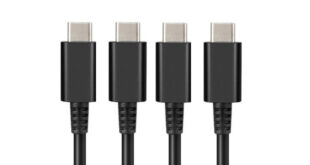The Wii U is difficult to develop for compared to other consoles and has an underpowered CPU for a new-gen console, an anonymous developer has claimed.
In a tell-all to Digital Foundry, the developer, who worked with an early version of the hardware and development kits for a launch title, claimed that while other consoles had mature tool chains that could be integrated with their development environment, the Wii U made it difficult to compile and run code.
The developer said that even though Nintendo had provided an integration of their development tools into Visual Studio, broken features meant the studio instead had to fix the issues, rather than just focusing on game development.
The anonymous game maker added that contacting the console firm had also been difficult, and answers to queries would often take as long as a week due to translation issues.
Citing problems with the console’s CPU, the dev claimed that for their studio’s particular game, certain features had to be cut back as it was not powerful enough.
On a positive note however, the GPU was said to be "very capable", and could potentially be used to pick up the slack from the CPU.
"There was even some discussion on trying to utilise the GPU via compute shaders (GPGPU) to offload work from the CPU – exactly the approach I expect to see gain traction on the next-gen consoles – but with very limited development time and no examples or guidance from Nintendo, we didn’t feel that we could risk attempting this work," said the developer.
"The GPU is better than on PS3 or Xbox 360, but leagues away from the graphics hardware in the PS4 or Xbox One."
The developer also stated early concerns over Nintendo’s online network and MiiVerse, and what was labelled only a "partially developed OS" just weeks before the launch of the Wii U – which required the infamous day one patch for console owners to fix it.
In a scathing assessment, the anonymous game maker said Nintendo was struggling with third-party support due to the aforementioned tool chain problems, communication issues with the firm itself and low sales.
"We eventually released our game and it was generally well-received, so the management sat back to see what kind of sales figures we would get for all our efforts. Without going into detail it would be fair to say that the numbers we were seeing were less than impressive. In fact we would be lucky to make back all the money that we had invested in making the game in the first place, and although the management publicly supported the Wii U platform, it is unlikely that we would ever release another Wii U title."
Case for the defence
Despite the criticism, a few developers have come out in defence of the Wii U.
Nami Tentou founder and Ping 1.5 developer Christopher Arnold said most of the complaints in the article referred to pre-retail SDK problems, and that the post-release SDK does not contain any of the issues mentioned.
"Most of the main complaints pointed at in the article from the dev is aimed at pre-retail release SDK problems," he tweeted.
"I can safely say that the post release SDK kit given to developers now do not contain any of the listed problems and being an early on developer on any new hardware will pose challenges to those unfamiliar. Programming and coding is most of the time trial-and-error.
"Wii U game development takes the same amount of work and attention as a Xbox 360 or PS3 game development. They’ve done their process of making their API understandable and useful to seasoned programmers. Wii U development = any other game console development time."
In the latest issue of Develop, Nyamyam studio co-founder and Tengami developer Jennifer Schneidereit said the self-publishing process for the Wii U "had been really good so far", and the firm had worked with the indie to ensure a smooth development process and help the team overcome any hurdles.
It should be noted that in an attempt to make development easier for some indies, Nintendo has also released its Web Framework, a development environment used to make Wii U software with HTML5 and JavaScript
"There’s a level of contact that just doesn’t exist when working with Apple for example," she said.
"In order to self-publish on the Wii U I started by signing up to Nintendo’s developer program. It took a few days for the confirmation to come through. From there we soon had access to the developer portal and all the tools and development documentation.
"Soon after we got two Wii U dev kits sent over from the US. These initial steps were very easy and each step had a clear contact person for me to reach out to in case I had any questions. I was a little surprised that there was so much personal contact between us as a developer and Nintendo early on, which is unusual in this day and age and I definitely appreciated it."
What are your thoughts on developing for the Wii U? Have you encountered any difficulties? Are you happy with the hardware and development kits?

 MCV/DEVELOP News, events, research and jobs from the games industry
MCV/DEVELOP News, events, research and jobs from the games industry



